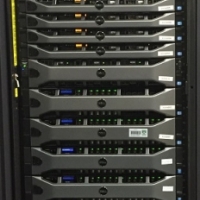 Researchers are using the new Pople HPC cluster to study gravitational waves at the University of Western Australia.
Researchers are using the new Pople HPC cluster to study gravitational waves at the University of Western Australia.
Head of the computational chemistry lab at UWA’s School of Chemistry and Biochemistry, Dr Amir Karton, said the new supercomputer will also support advanced research in computational chemistry, biology and physics.
Pople places the Faculty of Science in a unique position for supporting advanced research across all areas of research in the Faculty” he said. “For example, it will be used for conducting multi-scale simulations of biochemical processes, studying gravitational waves, and simulating combustion processes which generate compounds important for seed germination. Such research could have been previously carried out only on national supercomputers, now these capabilities are accessible to any researcher in the Faculty.”
Dean Taylor, the Faculty’s systems administrator, said the supercomputer comprises 2316 cores in the compute nodes – 7.8 TB of main memory and 153 TB of local scratch disk – and was specifically designed for carrying out large-memory and data-intensive applications involved in computational chemistry, biology, physics, and ‘big data’ research.
“For this purpose it contains compute nodes with up to 512 GB of RAM and large solid-state disks,” he said.
He said a large portion of the Intel Xeon CPUs (1896 cores) were from a donation by Perth-based geoscience company DownUnder GeoSolutions to the Faculty of Science.
DownUnder GeoSolutions’ Managing Director, Dr Matthew Lamont, said it was the company’s way of ‘investing in the future’.
We’re thrilled to be able to give back to a university that has contributed greatly to the fields of science and geophysics,” he said.



